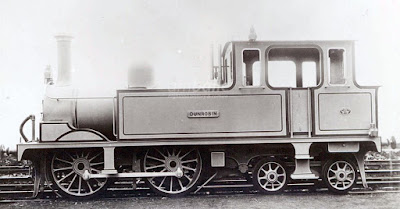Pete's latest Aids to Scratch Building have just arrived from the casting workshop and they look just as crisp and well detailed as usual. These latest additions to the Highland Railway range are sides and ends for a Drummond open fish truck with drop sides, based on the drawing on page 139 of Peter Tatlow's "Highland Railway Carriages and Wagons", which you will need as reference to complete the model. The additional parts needed are available from the trade, so in effect you're creating your own multi-media kit and all the components are your own preferences. Some parts, such as the brake lever and handles, can be simply cut from n/s sheet or in the case of the underslung vacuum cylinder, built up from metal tube, sheet and rod. You might find a few parts in your spares box too, I found some etched brakes and hangers which saved me cutting them out of sheet as there are eight of them needed for this wagon. As these fish wagons were designed to run in passenger trains the braking arrangements, as can be seen in the accompanying photo, were more complex than on a simple open goods wagon, which gives these wagons much added interest.
 |
| I have not come across a picture of a Drummond fish wagon in Highland Railway livery so can only show one in LMS days. In earlier times, as HR No.1867, the wagon would have carried Highland green livery with yellow lettering. (DLG Hunter) |
 |
| Aids to Scratch-Building, sides and ends for a Drummond Fish truck. |
The parts are available right now as detailed below...
Resin sides and ends £20.00 per set, plus postage at cost £1.29 (UK)
If you buy 2 sets then they're post free.
Buy three or more and there is a discount of 10%.
You can email, 'phone or message on...
armstrongps1@gmx.com
017687 71302
07342 637 813
Suggested parts and suppliers...
Wheels: Slaters' 3ft 7" Mansell disc coach ref. 7124
Buffers: HR Short Web. Invertrain
Springs: Slater's Plastikard
W-irons and brakes: Slater's Plastikard ref: 71551
Axleboxes: Invertrain
Couplings: CPL Models or LGM 9-008
Safety Chains & Hooks: LGM 9-006
Brake Cross Trees x 4: LGM 36-006
Vacuum Pipes: LGM 32-010 or 62C Models: LWB113
Westinghouse Pipes: 62C Models: LWB108
Structural Members: Plastruct
Floor & Deck Planking: Slater's Plastikard
There are tongues and grooves on the wagon corners to assist assembly, so I assembled the sides and ends dry, then ran ZAP Medium glue inside the corners. When dry and firm I dropped a floor cut from 1mm Plastikard into place between the sides. When all was set firm I found there was a slight twist to the structure which I corrected in a bowl of warm water, all is square and solid now so I will add structural bracing next under the floor using Plastruct Styrene Strip 2.5 x 6.4mm (90779).
 |
| Sides and ends assembled with Plastikard floor |
 |
| The Plastruct beams under the floor add structural strength, they are not intended to be prototypical. |
 |
| Brake Cylinder and linkages in position. |
As my scrap box was deficient in useful parts I made the brake cylinder and linkages from brass tube, sheet and rod as a separate module, on a small base of its own, which will glue into place later. The w-irons and wheels will be fitted next then the rest of the brake mechanism.
The following pictures show the completed wagon underside, all components were sourced as suggested above. The etched clasp brakes, all eight of them, came from my scrap box and I do not know their provenance. I mounted them on 0.45 n/s sheet, to make them a respectable thickness, then cut them out, repositioning the brake shoe at the same time to fit their situation. The vertical brake legs were soldered onto a piece of "L" shaped brass so they could be glued in place on the wagon bed. Slaters offer a possible solution to the w-irons, brake cross-trees and the clasp brakes with their...
Van Type 3' 7" Dia. Wheels, Compensating Etched W-Irons Ref: 71551.
I've not used this etch yet, though I intend to do so when I build a second example of the truck, I think it will provide the answer to most of the parts below the solebar, though not the cylinder and cross-shaft assembly.
 |
| Underside complete |
Here you can see how I attached the vacuum and Westinghouse brake pipes to the wagon. The pipes are extended under the wagon and soldered to "L" shaped supports glued to the wagon bed.
 |
| Close-up of the hand brake arrangement and the under-slung vacuum cylinder |
 |
| Drummond Fish Truck complete. |
I used Phoenix P725 HR Mid Green (1875) with a liberal addition of matt black as the basic colour of the truck. Transfers are HMRS sheet 20 Methfix and Modelmaster 7PCS 1 water-slide, which are available from the HRSoc. A light spray with a dilute weathering mix completed the job.
Note that Phoenix P727 HR Dark Green (1885-1912), is no longer available, I think the earlier green mixed with black achieves the same colour. I have not made a number plate for the truck as these vehicles do not appear to have carried them.



































